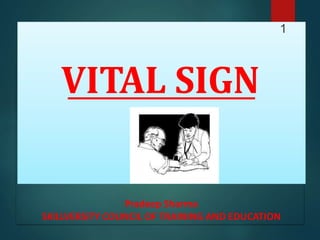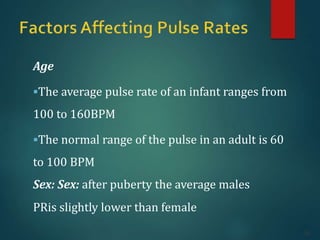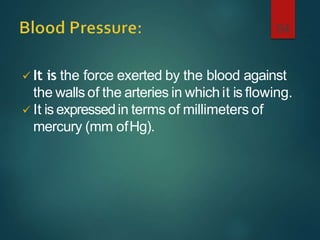Vital signs include temperature, pulse, respiration, blood pressure, and pain. Procedures for accurately assessing each vital sign are described along with common factors that can influence readings. Key equipment for taking vital signs includes a thermometer, stethoscope, sphygmomanometer, watch, and recording sheet. Vital signs are usually taken on admission, with changes in condition, before/after certain medications or procedures, and according to hospital policy in order to monitor a patient's health status and detect any deviations from normal ranges.



































































